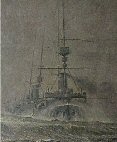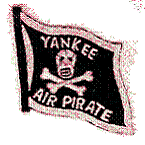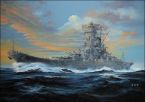Bullwinkle58
Posts: 11302
Joined: 2/24/2009
Status: offline

|
quote:
ORIGINAL: mike scholl 1
The guns may be older models, but the fire control was FAR superior to your "superdreadnoughts". Monter got it right..., the fire control of a fixed Coast Defense Installation is much more accurate than anything carried on ships.
This is only true within certain assumptions.
Long-base-line shore FC has superior range-finding, yes. That's it. This is often compromised by less effective communications between widely-separated stations than are avaialble in a ship environment. But rangefinding is only one aspect of fire-control.
Many of these shore FC systems were designed in an era where line-of-battle ships cruised in formation past shore targets and fired and maneuvered in tight central control by the flag. Analog FC systems (I've actually operated one) are great at predicting along a curve--they're just elegant gear trains after all. If the target maintains course and speed subsequent data inputs from operators gradually refine the FC solution to a hair-bredth, and shore installations are indeed very accurate. But they are terrible, far less effective than modern digital, real-time input systems, when the target is maneuvering, especially when the target is maneuvering in a random matter. They then "chase" the solution, and errors can be multiplicative.
For one, easy example, look at the WWII USN's submarine TDC (Torpedo Data Computer), an analog FC system not too different in theory from shore-based FC systems. (The system I used in a 627-class SSBN, commissioned in 1964 and with 1950s FC technology, was a direct lineal descendant of the TDC. Consisting of an Angle Solver and a Position Keeper, an Assistant Approach Officer from 1943 could have operated it after fifteen minutes of instruction.) The TDC took observed inputs of range, bearing, and angle-on-the-bow, added own-ship data, and output a firing solution of target course, speed, range, and torpedo gyro angle. It was very accurate so long as the inputs were accurate, and predicted along the target track in a useful way, allowing the Approach Officer to plan own-ship maneuvers to maximize the tactical results, and to plan for his escape. Except . . . when the target zigged. Then the solution fell apart and had to be restarted. Of course range doesn't change (targets don't teleport), but speed and course can change rapidly. One, the other, or both at once--bearings don't give that answer right away. It takes multiple looks. Angle-on-the-bow was used to quickly estimate new target course, but speed is more difficult, often requiring turn-counts from sonar (and in modern times, Doppler analysis.) All of this takes time.
So, in a shore-based FC system, if the targets are not behaving and cruising along in lines to their doom, the long-base-line rangefinding is nice, but hardly determinative. The targets can blow the shore FC solution time after time by simply changing course and speed randomly, even if they're running away. And at 30+ knots they will run away pretty fast, certainly in less time than it takes Mr. Shore Battery to fire 150 rounds.
As for ships being less accurate, yes, they are, because they pitch, roll, and yaw. But their targets ashore do not move, and, in daylight, they can do 2-3 crossed-beairng fixes in under a minute and know exactly where they are in relation to the target. Short-base-line range-finding is only a problem against OTHER SHIPS, not against shore targets. Range is not the source of the error--own ship's movement is. Afloat FC systems attempt to correct for 3-D errors imparted by being afloat, but can never really correct in real time. The sea moves too randomly. But in calm seas the platform is stable enough to hit targets ashore. They didn't spend all that money and effort on casemating for nothing.
OTOH, late in the war, the BBs could stand off and let the napalm do its work. Even in casemates men have to breathe.
< Message edited by Bullwinkle58 -- 4/14/2010 2:07:26 PM >
_____________________________
The Moose
|
 Printable Version
Printable Version












 .
. 


 New Messages
New Messages No New Messages
No New Messages Hot Topic w/ New Messages
Hot Topic w/ New Messages Hot Topic w/o New Messages
Hot Topic w/o New Messages Locked w/ New Messages
Locked w/ New Messages Locked w/o New Messages
Locked w/o New Messages Post New Thread
Post New Thread